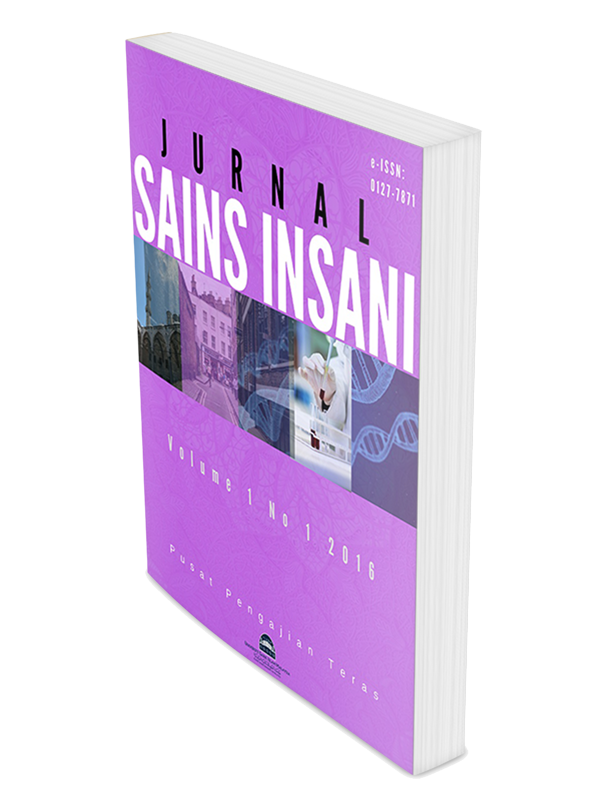Paragraph Composition Via ‘Carousel with A Destination’: A CSR Project with Year 5 Students
Pembangunan Penulisan Melalui ‘Carousel with A Destination’: Satu Projek Tanggungjawab Sosial Korporat Bersama Murid Tahun 5
DOI:
https://doi.org/10.33102/sainsinsani.vol6no2.299Keywords:
Bahasa Inggeris, pembelajaran yang menyeronokkan, penulisanAbstract
Writing is a skill that amalgamates various knowledge like vocabulary, sentence structure, spelling, and grammar. ‘Carousel with a Destination’ (CwaD) is a concept that provides the students with the required knowledge which is to be pieced together in writing. Carousel refers to the stations arranged in a circle and each station offers different activities which are related to the chosen topic and skills for writing. This paper highlights CwaD - the project and more importantly, it discusses the concept of effective fun learning. Thus, to show its effectiveness, the paper puts forth a study as proof of the success of CwaD. This study utilised a simple and direct pencil-paper questionnaire. The respondents were 56 year five students who participated in the project. There are three findings that can be shared. Firstly, the students really enjoyed participating in the project. Secondly, the writing they produced was good as they used the vocabulary, the paragraph structure and correct grammar which they just learnt at the carousel stations. Thirdly, the words they chose to express themselves in the open-ended part of the questionnaire reflect the elements that they like about CwaD – either regarding the activities, the teachers or the ‘learning’ itself. All the words are positively-connotated. CwaD is sustainable in terms of scalability where it can be conducted for any subject and for any number of students. It is beneficial as an introduction or as a recapitulation of any topic.
Penulisan merupakan satu kemahiran yang mengumpulkan pelbagai disiplin ilmu seperti perbendaharaan kata, struktur ayat, ejaan dan juga nahu. ‘Carousel with a Destination’ (CwaD) adalah merupakan satu konsep yang menggabungkan semua ilmu yang terlibat bagi menghasilkan sesuatu penulisan. Carousel merujuk kepada stesen yang disusun di dalam bulatan yang mana setiap stesen tersebut menyediakan aktiviti yang sesuai untuk topik yang telah dipilih bagi kemahiran menulis. Artikel ini mengetengahkan projek CwaD dan yang lebih pentingnya adalah konsep pembelajaran yang menyeronokkan dan berkesan. Maka, bagi menunjukkan bahawa CwaD ini berkesan, artikel ini membincangkan satu penyelidikan yang telah dijalankan semasa projek itu dikendalikan. Penyelidikan ini menggunakan soalselidik yang ringkas. Terdapat 56 responden yang semuanya murid tahun lima yang menyertai CwaD. Terdapat tiga dapatan yang boleh dikongsikan. Pertama, murid-murid sangat gembira dengan projek ini. Kedua, penulisan yang dibuat di akhir projek adalah baik kerana mereka telah menggunakan perbendaharaan kata, struktur perenggan dan nahu yang betul yang telah mereka pelajari di stesen carousel. Ketiga, perkataan yang mereka kongsikan menunjukkan elemen CwaD – sama ada mengenai aktiviti, guru atau ‘pembelajaran’ itu sendiri. Semua perkataan itu mempunyai konotasi yang positif. CwaD adalah bersifat lestari kerana ia mempunyai scalability di mana ia boleh digunakan untuk apa-apa subjek dan juga kepada bilangan pelajar yang pelbagai. Ia berguna sebagai pengenalan atau rumusan sesuatu topik.
Downloads
References
Caponetto, I., Earp, J., and Ott, M. (2014) Gamification and Education: A Literature Review,
th European Conference on Games Based Learning ECGBL2014
Chokwe, J.M. (2013). Factors impacting academic writing skills of English second language
students. Mediterranean Journal of Social Sciences, 4(14), 377-383
Cole, J. & Feng, J. ( 2015 ). Effective strategies for improving writing skills of elementary
English language learners. Chinese American Educational Research and Development Association Annual Conference, April 15-16, 2015, Chicago, IL.
Gamification in Education: A Systematic Mapping Study - Dicheva, D., Dichev, C, Agre, G.,
& Angelova, G. (2015). Education Technology & Society, 18(3), 1-14
Deterding et al 2011 - define G as the use of game design elements in non-game contexts.
Durga, V. S.S. & Rao, C.S. (2018). Developing students' writing skills in English - A process
approach. Journal for Research Scholars and Professionals of English Language Teaching, 6(2), 1-5.
Du, X. (2009). The affective filter in second language teaching. Asian Social Science. 5(8),
-165
Fareed, M., Ashraf, A., & Bilal, M. (2016). ESL learners' writing skills: Problems, factors
and suggestions. Journal of Education and Social Sciences. 4(2): 1
Kapp, K.M (2012). The gamification of learning and instruction: Game-based methods and
strategies for training and education. John Wiley & Sons.
Kellogg, R. T. (2001). Long-term working memory in text production. Memory & cognition,
(1), 43–52.
Nunan, D. (1989). Designing tasks for the communicative classroom. Cambridge University
Press, United Kingdom.
Wang, L. (2020). Application of affective filter hypothesis in junior English vocabulary
teaching. Journal of Language Teaching and Research, 11(6), 983-987
Downloads
Published
How to Cite
Issue
Section
License
Copyright (c) 2021 Noor Saazai Mat Saad, Fariza Puteh-Behak, Norhana Abdullah, Normazla Ahmad Mahir, Suzanah Selamat, Zarina Ashikin Zakaria, Hazleena Baharun, Ramiaida Darmi, Shahirah Sulaiman

This work is licensed under a Creative Commons Attribution 4.0 International License.
1. Author holds the copyright of the article.
2. Jurnal Sains Insani owns the rights to publish the article. The writer may request permission to republish the article from the editor.
3. Jurnal Sains Insani follows the APA (American Psychological Association) style for all in-text citation and list of bibliographies.











